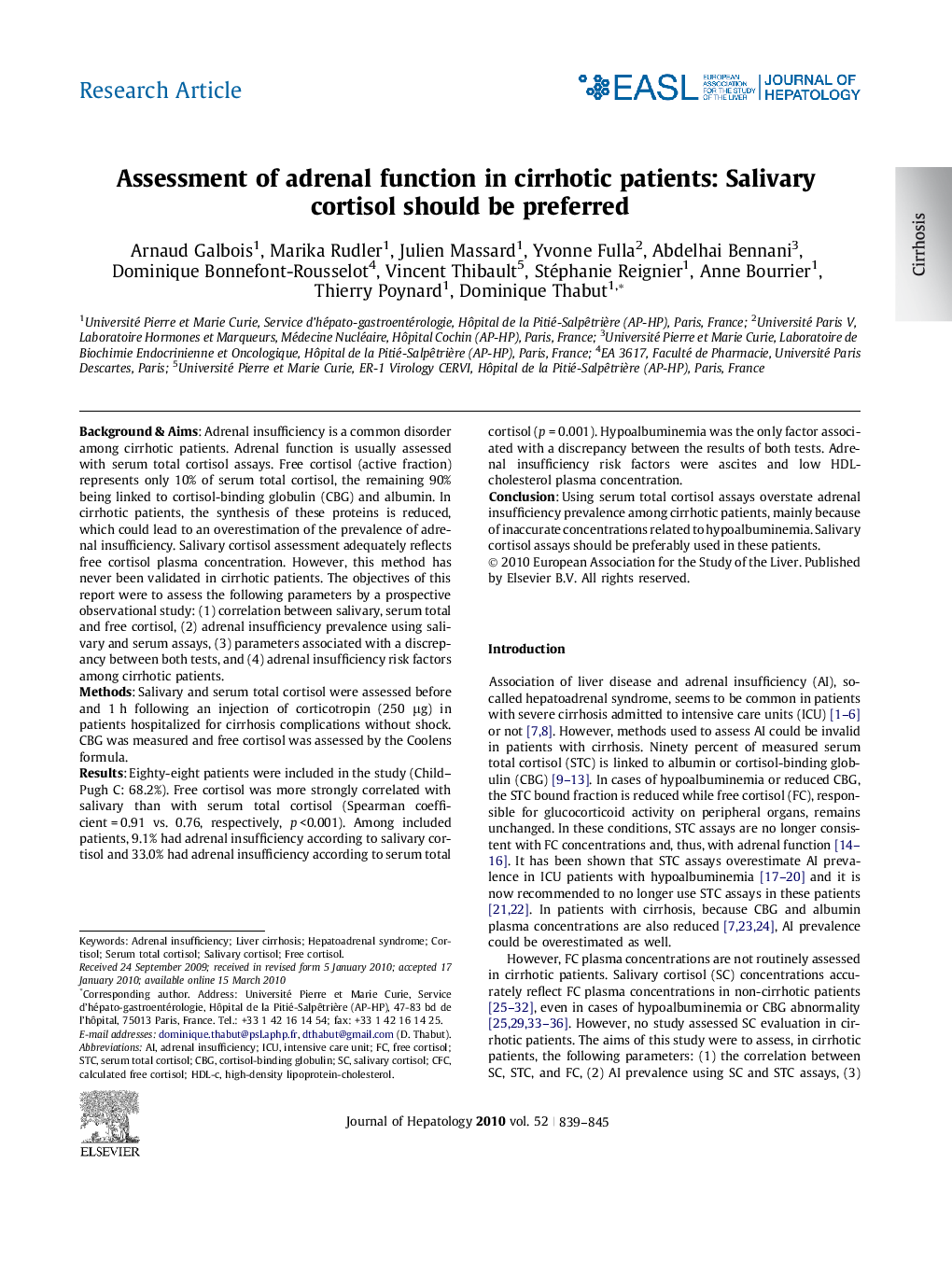| Article ID | Journal | Published Year | Pages | File Type |
|---|---|---|---|---|
| 6109219 | Journal of Hepatology | 2010 | 7 Pages |
Background & AimsAdrenal insufficiency is a common disorder among cirrhotic patients. Adrenal function is usually assessed with serum total cortisol assays. Free cortisol (active fraction) represents only 10% of serum total cortisol, the remaining 90% being linked to cortisol-binding globulin (CBG) and albumin. In cirrhotic patients, the synthesis of these proteins is reduced, which could lead to an overestimation of the prevalence of adrenal insufficiency. Salivary cortisol assessment adequately reflects free cortisol plasma concentration. However, this method has never been validated in cirrhotic patients. The objectives of this report were to assess the following parameters by a prospective observational study: (1) correlation between salivary, serum total and free cortisol, (2) adrenal insufficiency prevalence using salivary and serum assays, (3) parameters associated with a discrepancy between both tests, and (4) adrenal insufficiency risk factors among cirrhotic patients.MethodsSalivary and serum total cortisol were assessed before and 1 h following an injection of corticotropin (250 μg) in patients hospitalized for cirrhosis complications without shock. CBG was measured and free cortisol was assessed by the Coolens formula.ResultsEighty-eight patients were included in the study (Child-Pugh C: 68.2%). Free cortisol was more strongly correlated with salivary than with serum total cortisol (Spearman coefficient = 0.91 vs. 0.76, respectively, p <0.001). Among included patients, 9.1% had adrenal insufficiency according to salivary cortisol and 33.0% had adrenal insufficiency according to serum total cortisol (p = 0.001). Hypoalbuminemia was the only factor associated with a discrepancy between the results of both tests. Adrenal insufficiency risk factors were ascites and low HDL-cholesterol plasma concentration.ConclusionUsing serum total cortisol assays overstate adrenal insufficiency prevalence among cirrhotic patients, mainly because of inaccurate concentrations related to hypoalbuminemia. Salivary cortisol assays should be preferably used in these patients.
